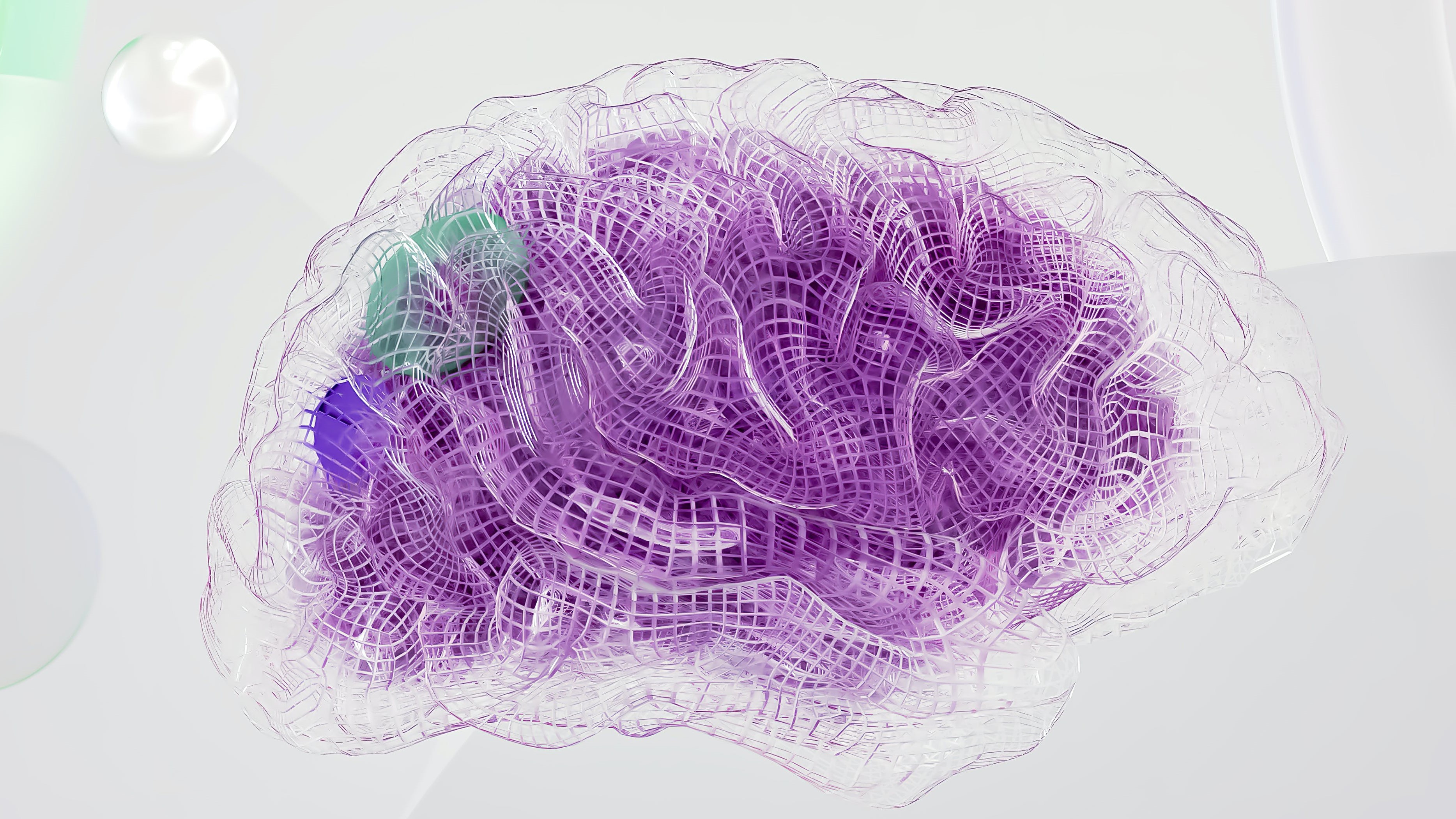Topics
Anna Kynthia Bousdoukou
Brain-Computer Interfaces: Promises and Implications

Brain-computer interfaces (BCIs) are cutting-edge technologies that link our brains directly to computers and other devices. Imagine controlling a computer or a robotic arm using just your thoughts; it sounds like something out of a science fiction movie, but it will slowly become our newfound reality. In an increasingly AI-driven world, BCIs are incredibly relevant because they pave the way for seamless communication between humans and machines. Dr, James Giordano, Professor of Neurology, Biochemistry and Ethics at Georgetown University Medical Center, explains to us how BCIs can enhance human abilities, revolutionize healthcare, and create a future where our thoughts can shape technology in ways we've never imagined, however with certain risks.
Can you explain, in simple terms, what brain-computer interfacing is and why it's an important area of research in neuroscience?
BCIs are technologies that yoke brain function to computational systems, through the use of integrating hardware and software.
For example, various forms of both transcranial and intracranial sensors and modulating devices can be connected to computational systems that (1) collect, codify, and enable pattern recognition and correlative interpretation of sensed signals; (2) enable computer-generated and - directed inputs to be transmitted to specific areas of the brain to modulate cognition, emotions, and behaviors, and (3) link brain signals to various types of prosthetics’ engineering (e.g. artificial limbs, speech/communication synthesizers, machine operating systems) to enable “brain-machine interfaces” (BMIs).
What are some of the key associated risks and how are researchers addressing them?
In the main, risks can be categorized into two basic domains: first are those that are focal to the technology; these devices are quite new, and therefore, their intermediate - and long-term effects - are not fully known. Although these devices enable more detailed analysis, understanding, and thus greater capability to affect the brain, the knowledge is evolving. Therefore, we must consider the intersection of unknowns: both those of the durable effects of the technologies per se, and those modifications to brain structure and function that may arise as a consequence of their use.
In this way, it is also important to consider side effects that may be at least burdensome, if not problematic and potentially harmful, as a consequence of such technologies’ longer-term use, and broader employment in more diverse populations of persons.
The second category of considerations arises from social sentiments, responses, and manifestations of the use (or non-use) of these technologies in select populations, and under particular conditions. Here it becomes important to consider that while the intended use of these devices is to attain some identifiable “good” outcome, such goods can be relative, and may actually incur burdens and harms as well.
Additionally, the use of BCIs to enable real time and remote sensing and modulation of brain functions has ethical and legal implications for what constitutes “mind reading”, and “thought and behavior control".
Finally, the use of these technologies to differentially optimize, or degrade, the cognitive, emotional, or behavioral capabilities of certain individuals or collectives, can render their employment in military, intelligence, and security settings, to be at least provocative, if not controversial.
In the wider discussion of “neurorights”, how can we ensure the privacy and safety of individuals involved? Are there any debates or controversies, within the scientific community, regarding the ethical use of brain-computer interfacing technologies?
However, this prompts questions of exactly how informed individuals can, and should be about the known, and perhaps yet to be known effects of these technologies, given their relative newness, as well as the intended and derivative purposes for which the technologies are being employed.
Thus, it is - and will be ever - more important that persons are well informed about the viability, provision, and sustainability of both (1) continued research to evaluate real world effects of these technologies over time and (2) clinical care, if and when burdensome or deleterious effects occur.
To address and remain responsive to these considerations and concerns, our group has developed an “Operational Neurotechnology Risk Assessment and Mitigation Paradigm” that (1) defines essential responsibilities for researchers, clinicians, and commercial developers of BCI’s, (2) provides a set of key questions, and (3) explicates framing contexts and contingencies to clarify benefits, burdens, risks and threats that the use or non-use of BCI’s made incur in specific settings, populations, and applications.
Could such technologies create a divide between those who have access to them and those who don't, leading to a form of cognitive inequality?
It is - and will be - important to consider who will receive these technologies, and how selection of such individuals (and/or groups) can, and perhaps should occur. Given that BCIs are new and emerging approaches to assessing and treating a variety of neurological and psychiatric conditions, as well as perhaps affording some means of performance optimization, it is likely that these technologies will be rather expensive, at least initially.
Thus, there is a question as to if, and to what extent healthcare costs of these devices’ use and upkeep will be compensated by insurance, or some other resource(s).
Here, concerns arise about asymmetries in provision, use, and effects, and it is easy to envision an increasing divide between the neurotechnologically-enabled “haves”, and the “have nots” that cannot afford these technologies. This fosters questions about how such “haves” and “have nots” will be regarded and treated in society, medically, economically, legally, and politically.
What are some real-world applications of brain-computer interfacing that can impact our daily lives? Are there any exciting breakthroughs or developments for the future?
At present, the majority of applications of BCI’s are for the assessment and treatment of neuropsychiatric disorders and neurological injuries. However, there is growing interest and expanding markets oriented towards possible uses of these techniques and technologies for cognitive, emotional, and behavioral modification and optimization.
Currently, BCIs are being employed for the assessment and treatment of certain types of anxiety, depression, and impulse control disorders, inclusive of addiction. These efforts remain incipient, and while still somewhat experimental, are increasing in validity, viability, and clinical value.

Dr. James Giordano, Professor of Neurology, Biochemistry and Ethics at Georgetown University Medical Center
Although use of transcranial hardware (i.e., that can be worn as headbands, or simply applied to the surface of the scalp or head) is relatively easy, safe (if and when used appropriately and within the parameters of prescribed), and affordable, more advanced forms of BCI technology, such as that used to sense and modulate brain activity through neurosurgically-implanted electrodes is obviously more complex, expensive, and therefore restrictive.
However, a current trend in the field, which is both exciting, and provocative, involves the use of nanoscale sensors, and stimulating electrodes that can be inserted into the body through inhalation, ingestion, or injection, and directed to the brain, wherein they can be situated to form vast arrays of (sensing and stimulating), nanoelectrode systems that enable remote, real time assessment, and modulation of brain activities and functions of thought, feelings, and actions.
How can public awareness and education help shape the ethical landscape around brain-computer interfacing? How can society stay informed and engaged in discussions without feeling overwhelmed or underqualified?
To be sure, these techniques and technologies seem very much like “science fiction”, however, they represent a present and rapidly evolving reality.
Responsibility for clear and truthful communication, discussion, and debate about these current and emerging technologies are, and should be increasingly borne by both scientific and media communities, so as to ensure accurate and factual representation in communication to the public.
This will be important to keep public stakeholder and shareholder groups accurately apprised of developments in science and technology, and the ways that such progress could affect particular individuals and collectives.
Professional communication and public awareness of ongoing advancements and uses (and possible misuses) of BCI technology will be important to inform guidelines, regulations, policies, and laws that direct and govern research initiatives, and various domains and dimensions of real-world applications.
Essential to such efforts is the need to recognize that brain science and technology are becoming multinational enterprises with considerable effect on national and international markets. 
In this light, it will be critical to acknowledge and address different nations’ cultures, values, philosophies, ethics, and laws, when considering how guidelines and governances can, and should be developed, enacted, and enforced.
This will require multinational discussion, and appreciative recognition, sensibility, and sensitivity to various groups and their cultural norms, values, as well as the relative benefits and burdens incurred as this science and technology continues to become both more capable and available on the 21st-century global stage.
*The opinions expressed by Dialogues participants, whether representing officially institutions and organizations or themselves, on events, articles, or other audiovisual media are solely their own and do not necessarily represent the views of the Stavros Niarchos Foundation (SNF) or iMEdD. Opinions are made freely, without prior guidance or intervention from the team.

